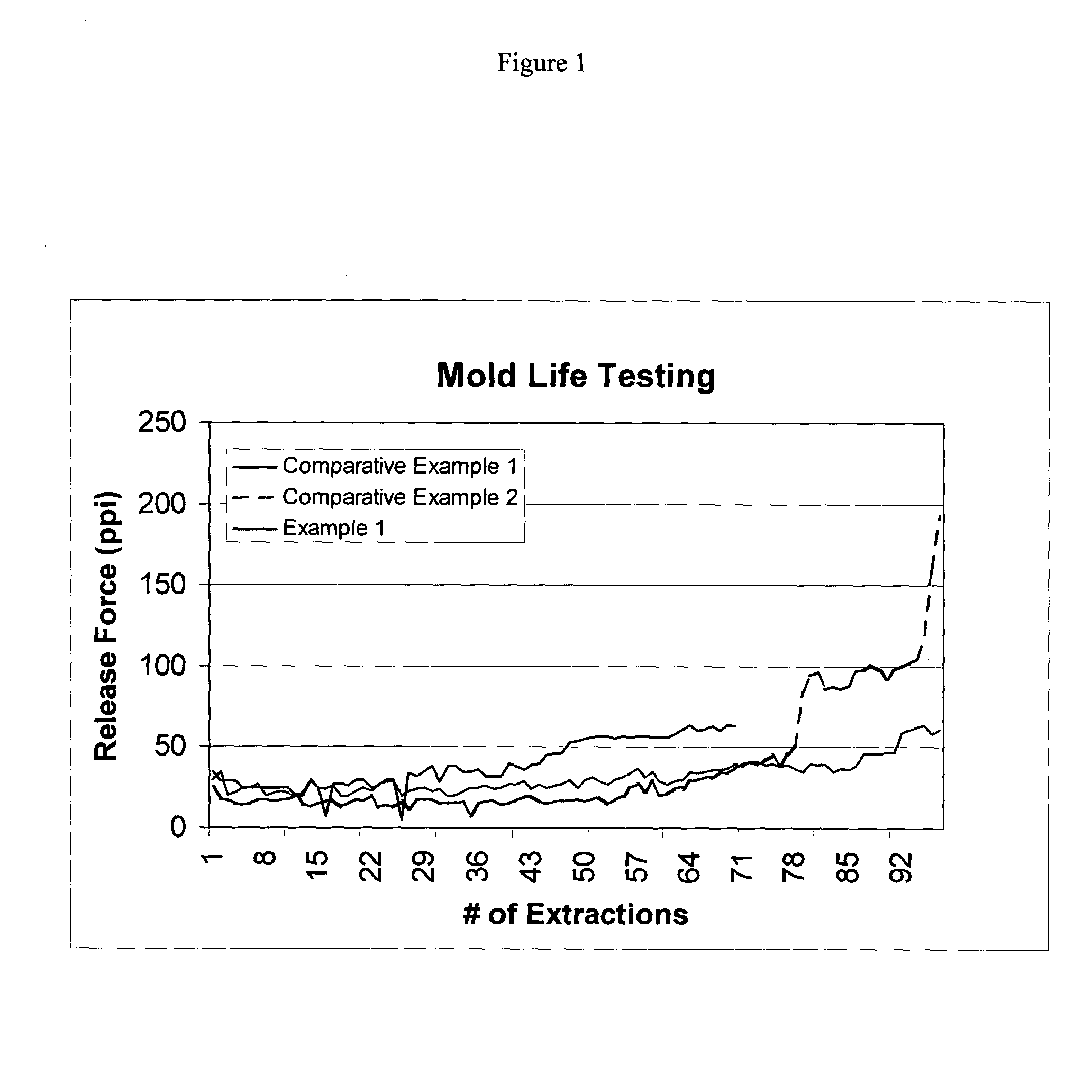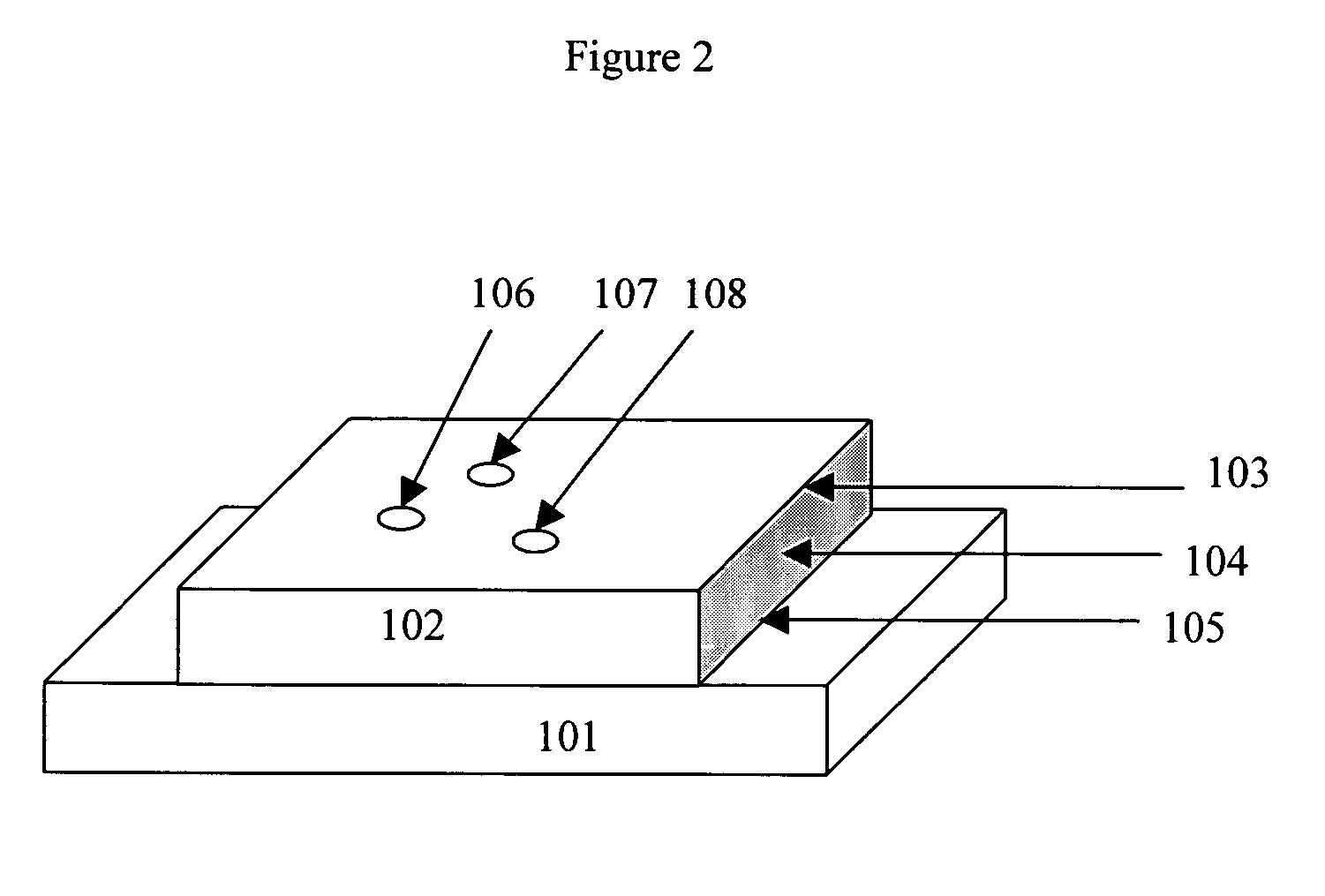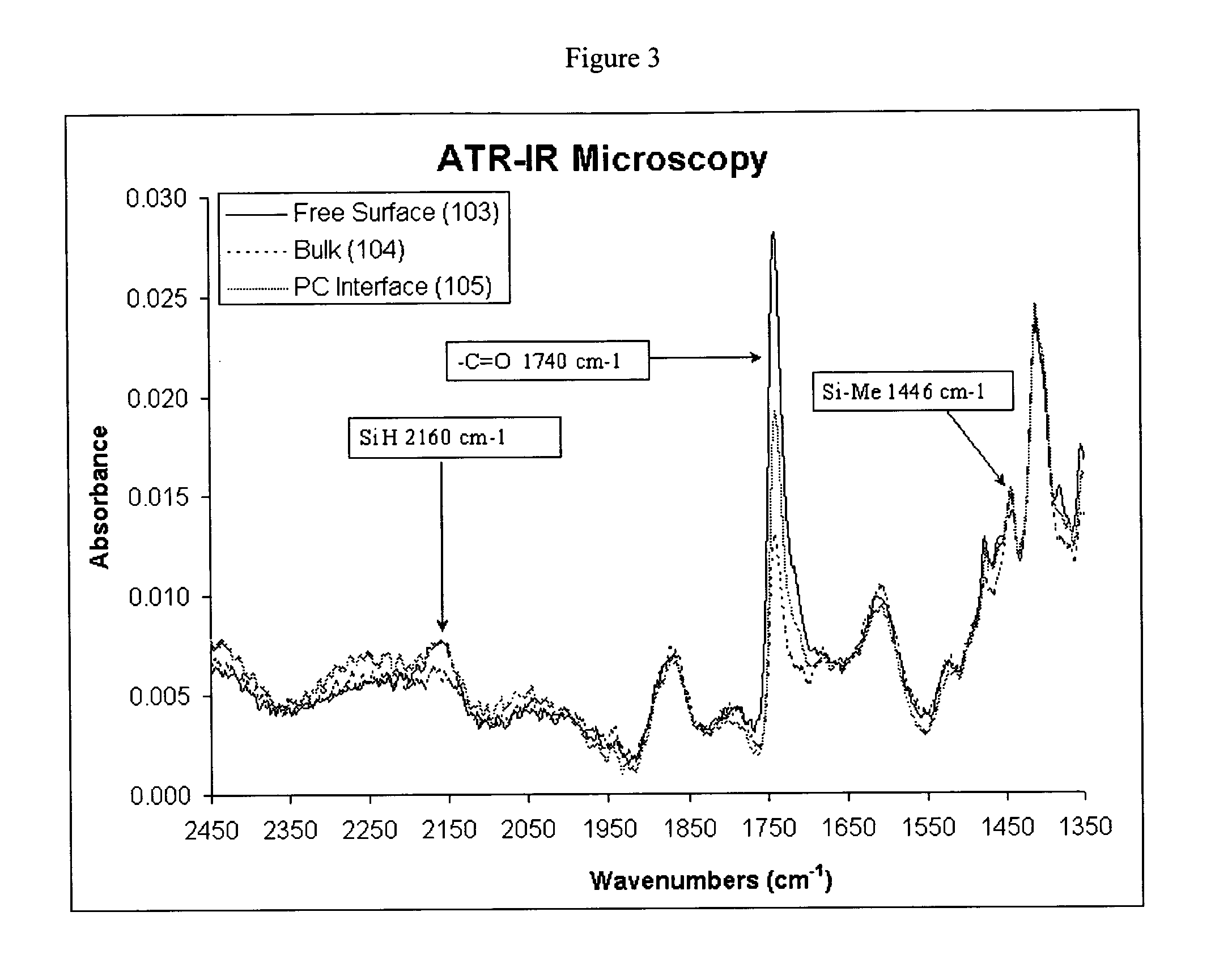Silicones having improved surface properties and curable silicone compositions for preparing the silicones
a technology of silicone composition and surface properties, which is applied in the field of curable silicone compositions and products, can solve the problems of poor resistance of polyorganosiloxane elastomers to some organic chemicals, solvents and engine oils, and fluorosilicone elastomers to suffer from the drawback of having a higher cost than polyorganosiloxane elastomers
- Summary
- Abstract
- Description
- Claims
- Application Information
AI Technical Summary
Problems solved by technology
Method used
Image
Examples
reference example 1
Validation of In-Situ Surface Modification by Contact Angle Analysis
Silicone rubber samples are cast into smooth-walled 100 mm diameter sterile polystyrene Petri dishes (Fisher Scientific 08-757-12) to a thickness of about 4 mm. A VCA 2000 contact angle goniometer is used to measure water contact angles. The top of the sample is analyzed, as cast in 6 randomly selected positions.
reference example 2
X-Ray Photoelectron Spectroscopy of Ambient Cure Samples
Sections of cured silicone rubber samples are prepared as in Reference Example 1. Sections are then cut out with a clean razor blade for analysis. The top surface of the rubber is studied by X-ray photoelectron spectroscopy (XPS) to provide elemental composition of the free surface (air interface). The bulk (interior) of the sample is studied after exposing the inner area by slicing away a thin layer from the surface with a clean microtome blade. Each surface is analyzed in two places to verify reproducibility. The samples are mounted to a sample stage with metal clips and are de-gassed in a mini-vacuum chamber for 4 days and in the XPS sample introduction chamber overnight. Use of a liquid nitrogen shroud on the XPS is carried out to maintain an acceptable chamber pressure during analysis. A low-resolution survey spectrum and high-resolution spectra of O, C and Si are obtained at each analysis position. The surface compositi...
reference example 3
Moldlife Testing
A composition is poured into a plastic cup around a central conical die and allowed to cure. The die is then mechanically removed from the resulting cured mold and replaced with a urethane resin. The resin plug has a metal handle, which is used to extract the molded part from the mold in a tensile direction. The force necessary to pull the part from the mold is measured by a load cell and recorded digitally. This process is repeated using an automated sampling robot, and the mold release force is recorded as a function of time until failure of the mold.
PUM
| Property | Measurement | Unit |
|---|---|---|
| viscosity | aaaaa | aaaaa |
| viscosity | aaaaa | aaaaa |
| viscosity | aaaaa | aaaaa |
Abstract
Description
Claims
Application Information
 Login to View More
Login to View More - R&D
- Intellectual Property
- Life Sciences
- Materials
- Tech Scout
- Unparalleled Data Quality
- Higher Quality Content
- 60% Fewer Hallucinations
Browse by: Latest US Patents, China's latest patents, Technical Efficacy Thesaurus, Application Domain, Technology Topic, Popular Technical Reports.
© 2025 PatSnap. All rights reserved.Legal|Privacy policy|Modern Slavery Act Transparency Statement|Sitemap|About US| Contact US: help@patsnap.com



